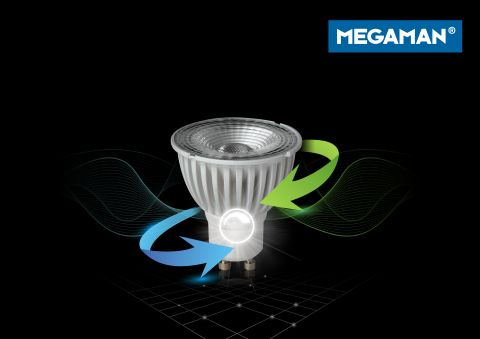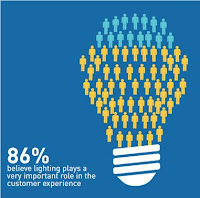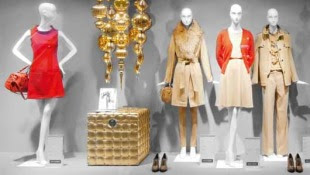CAT | LED Spots
6
Dubai rules all new properties must fit Philips LED lamps
Comments off · Posted by admin in LED, LED panels, LED Spots, LED Tubes, Philips LED
Fitting Philips ‘Dubai Lamp’, will be made the basic requirement for getting a Building Completion Certificate in Dubai.
Philips struck up a good deal!.. All new buildings in Dubai will soon be compelled by law to install specific LED lamps, the municipality has ruled, after striking a deal with Philips Lighting to supply millions of light sources to the emirate.
Authorities in Dubai signed a five-year contract with Philips to create the ‘Dubai Lamp’, which, it it is claimed, will be the first commercially available 200 lumen per Watt LED lamp.
The new fixtures will replace 80 percent of traditional lights currently in the emirate’s residential buildings, and, as of this year, all new buildings constructed in the city will have have to feature the Philips LED.
Fitting LED in new buildings will be made the basic requirement for getting a Building Completion Certificate, by the end of this year.
The initiative will initially focus on new buildings and big complexes such as schools, hospitals, mosques and shopping centres. A study will also be undertaken to develop a strategy of implementation for older buildings, in an attempt to ensure that the scheme ensures a wider legacy and that energy savings and a positive environmental impact continue to grow overtime.
Philips has been commissioned by the Dubai authorities to manufacture and supply two million of the ‘Dubai Lamps’, which will not contain mercury or generate heat. The Dubai Municipality plans to install 10 million Dubai Lamps before the end of 2021.
‘It will be made the basic requirement for getting a building completion certificate. This will be beneficial for both sides. The owner of the building will be able to save a lot of money on energy charges and we will able to protect the environment,’ Hussain Nasser Lootah, director general of Dubai Municipality, told The National.
‘In the beginning, we will concentrate on new buildings and we will complete a study of old buildings to see what can be done.’
Lootah said the latest agreement which is in line with government directives, supported the Dubai Integrated Energy Strategy, which targets a 30 percent reduction in energy consumption by 2030, and the Dubai Carbon Abatement Strategy, which is aimed at reducing carbon emissions by 16 per cent by 2021.
The lamps will be available in four models, both in cool daylight and warm white colours. That includes 1W candle lamps to replace the 25W incandescent lamp, 2W bulbs to replace 40W incandescent lamps, 3W bulbs to replace 60W incandescent lamps, and the 3W MR16 Spot to replace 50W halogen spots.
Novel Energy Lighting supplies the full range of Philips LED lamps, tubes, and luminaires. Please visit us today, or email: sales@novelenergylighting.com or call (0208-540-8287) to discuss you project needs.
dubai lighting · LED lamps · Novel Energy Lighting · philips led · Philips LED bulbs · philips led luminaires · Philips led panels · philips led tubes · philips lighting
 With the advent of LED lighting, the relationship between legacy dimming technology and LED lamps has become an uneasy one. Here MEGAMAN® shows how to overcome such difficulties.
With the advent of LED lighting, the relationship between legacy dimming technology and LED lamps has become an uneasy one. Here MEGAMAN® shows how to overcome such difficulties.
New for old?
One of the big areas for dimming problems comes when home owners decide to switch out all of their traditional lamps for LEDs, but don’t change the dimmers at the same time. This is largely down to the lack of public knowledge about the fact that trying to combine old and new technologies can lead to all kinds of issues.
The problems that can occur when new and old are combined include: lamp flicker, flashing, an inability to dim as low as required and failures with the LED and/or dimmer. Even if the LED lamps seem to initially respond well to dimming, over time, the use of LED light sources on a legacy dimmer can have longer-term implications that lead to call-backs, weeks or months after installation.
The root of the problem
Almost all legacy dimmers designed for incandescent light sources are leading edge or trailing edge dimmers that commonly use a TRIAC/transistor as the key control device. This chops out parts of the voltage and reduces power to the light source in order to achieve the dimming performance. Though these work with incandescent lamps, LED lamps have an internal filtering circuit that distorts the supply signal and can result in system oscillations that are observed as flickering or flashing.
As well as encountering flickering and variable dimming performance, in extreme cases incompatible dimmer switches cannot be turned on, or suddenly shut off, can burn out, or permanently damage the LED lamps. In addition, traditional dimmers have a minimum load requirement of 40W or 60W, something that causes problems when replacing them with low wattage LED equivalents.
GU10’s – the LED opportunity
With halogen directional reflector lamps being phased out across Europe from September 2016*, there will be an increased push from homeowners for LED replacements. With the advances in LED lighting technology, there are now a wide range of exceptional alternatives to halogen lamps.
However, dimmable LED GU10 lamps are complex pieces of engineering, as they have to house a transformer, as well as dimmable driver components. There are at present a lot of dubious dimmable LED replacement lamps on the market. As with most things, you get what you pay for. So avoid the lower end of the market and choose a trusted LED manufacturer.
MEGAMAN has just launched its new selection of GU10 lamps (that incorporate the company’s new Hybrid Reflector and U-DIM™ technology – see products here). Available in both the popular Economy range and Professional range, these lamps are compatible with the widest possible range of existing dimmers, whether they are leading-edge or trailing-edge.
Overcoming LEDs and Dimming Problems:
Solution One: When keeping the traditional dimmer
For those installers faced with a homeowner who wants to keep their dimmers, wants LEDs and yet doesn’t know what type of dimmer has been installed, a solution is now at hand. MEGAMAN has developed its new U-DIM™ technology, which takes the headache out of switching to dimmable LEDs.
MEGAMAN U-DIM dimmable LEDs are compatible with the widest range of existing dimmers, whether they are leading-edge or trailing-edge dimmers. With the mains voltage halogen reflector lamps being phased out in Europe from 1st September 2016, home owners will need new lamps to operate perfectly with their existing dimmers and this dimming solution is a giant step in that direction. U-DIM LEDs are easy to use and it is possible to ‘plug-and-play’ to upgrade a lighting scheme.
MEGAMAN U-DIM technology is offered as a standard feature on MEGAMAN Dimming LEDs and they offer superior performance and flicker-free dimming from 100% right down to just 5%.
Solution Two: When replacing with new LED dimmers
Dedicated LED dimmers are a good way to overcome many of the traditional dimmer/LEDs issues. This is because they use micro control units to monitor and eliminate waveform noise and distortion, generating a digital signal to the control component that creates a stable and clean chopped waveform. If these dimmers are combined with LED lamps that have been tested and approved for compatibility (this is usually found on the dimming and/or LED lamp manufacturer’s website) – see the MEGAMAN one here as an example, then smooth LED dimming is guaranteed from day one of installation.
Dimming LEDs Checklist:
- Buy dimmable LEDs from a brand you trust
They will have tested a wide variety of dimmers with their lamps and have more comprehensive dimming compatibility lists
- Trailing edge dimmers work best with LEDs
However, if the client doesn’t want to replace their leading edge dimmers, then use LEDs that have been proven to dim well with this technology, such as MEGAMAN U-DIM LEDs
- If in doubt, contact the LED manufacturer
Unsure of whether the dimmer and LEDs are compatible? Check with the manufacturer’s online compatibility list, or contact their team for more advice
*For more information on the halogen ban – visit www.planfortheban.eu
Visit Novel Energy Lighting to buy your Megaman U-DIM GU10 lamps today
dimmable led gu10 · led dimming · led GU10 · LED lamps · megaman gu10 · Megaman LED GU10 · megaman u-dim · Novel Energy Lighting · u-dim
1
Increased Dimming Compatibility With New Megaman GU10 Range
Comments off · Posted by admin in LED, LED downlights, LED GU10, LED Spots
Megaman, a leading LED lighting solution provider, is proud to announce the launch of a new selection of GU10 lamps that incorporate the company’s new Hybrid Reflector and U-DIM™ technology.
A new 4W (250lm) GU10 and 5W (360lm) dimming GU10, with 25,000 hours’ life, are now available in Megaman’s popular Economy range, whilst the Professional range sees the addition of a new 5.5W (500lm) and 7W (550lm) dimming GU10, both with 50,000 hours life.
All of the new dimming GU10’s incorporate Megaman’s revolutionary U-DIM™ technology as standard – making the lamps compatible with a wider possible range of existing dimmers, whether they are leading-edge or trailing-edge.
The new 7W addition to the Professional Range also features Megaman’s new Hybrid Reflector, providing excellent optics, high efficiency and precise beam control.
Megaman’s Economy range comes with 2 years warranty and the Professional range with 3 years as standard, extendable to 5 years through the website.
Buy Megaman GU10s from our website: www.novelenergylighting.com, or call us to discuss volume requirements: 0208-540-8287, email: sales@novelenergylighting.com
LED downlights · led GU10 · LED lamps · led spot · megaman 5.5w gu10 · megaman 5w gu10 · megaman 7w gu10 · megaman gu10 · Megaman LED · Megaman LED GU10 · u-dim
25
Megaman Survey Shows Lighting Is Big Business For Hospitality Sector
Comments off · Posted by admin in LED, LED GU10, LED MR16 lamps, LED Spots
86% of hospitality professionals believe lighting plays a very important role in the customer experience. The findings of the survey, sponsored by Megaman, reveal that lighting is big business in the hospitality sector:
- only 1% of those surveyed think lighting is of no importance in the customer experience.
The findings show that good lighting encourages guests to stay longer and come back for more:
- 72% have left a venue earlier than planned because it was too brightly- or poorly-lit
- 74% have stayed longer than planned because the lighting made them feel relaxed and welcome.
Respondents thought a well-lit venue is:
- “somewhere that draws you in” (36% of respondents)
- “somewhere to spend time” (34%)
- “somewhere to go back to” (26%)
- none of the above (4%).
The survey revealed that respondents thought that upfront lighting refurbishment costs are less important than ambience. When making decisions on new lighting in a venue, hospitality professionals say that key considerations are:
- the effect and ambience of the new lighting (67%)
- the ability of staff to dim the lights (43%)
- energy bill/CO2 savings (31%)
- the upfront costs (23%).
Overall, 43% of those surveyed have been involved in a lighting refurbishment in their present or previous venue and said:
- the new lighting had been well received by customers – 84% of customers gave positive feedback on the lighting refurbishment
- good lighting boosts business – 91% think the lighting refurbishment had a positive impact on business in terms of an uplift in sales or profits
- education is still needed about the benefits of LEDs.
Only half of all hospitality professionals (49%) think a halogen lamp ban next year would be a positive change for them, while 36% say it would not affect them at all and 15% think that a ban will have a negative impact on them.
Fred Bass, managing director of Neonlite International, the brand owner of Megaman, said: “This survey supports what we are seeing in our day-to-day business within the hospitality sector – good quality lighting is appreciated and a well-lit scheme attracts customers who stay longer and spend more.
“However, the one area where I think we are at the cusp of a tipping point is in the understanding of the benefits of LEDs amongst the majority of those in the hospitality sector. Although half of those surveyed say that they think the banning of halogen lights and introduction of LED equivalents would be positive, there is still another half who are unsure.
“As more and more bars, restaurants and hotels experience the benefits of the latest in LED lighting technology, I believe we will see a dramatic sea-change in favour of LEDs.”
hopsitality led · hospitality lighting · led ambient lighting · LED downlights · led gu10s · LED lamps · LED spots · Megaman LED · Novel Energy Lighting
1
Light Generates Added Value, More Effect, More Turnover, More Efficiency
Comments off · Posted by admin in LED, LED downlights, LED Spots
Retail is dependent on turnover. And, of course, profit, in the end. Whether it be food or non-food – the level of financial success is largely dependent on the type of lighting. And in a quite different way.
Light inspires, light stimulates, light seduces
The correct lighting puts the customers in a buying mood. This starts in the shop window: Effective lighting causes people to pause in fascination. In the sales area the light takes on several roles: from simple orientation, via accenting the products to the staging of the entire indoor area. The right light is pure sales promotion – in retail, in shopping malls and in warehouses. Lighting creates atmosphere, puts products in the right light, supports customer guiding and emphasises the brand image.
Clear potential saving by efficient light
In retail, lighting represents a considerable cost factor: in the food trade, this is 25 % of the total energy costs. In the non food trade, lighting represents more than 60 % of the energy costs and is the highest cost factor! This is often combined with high maintenance costs. Using modern light and well thought out lighting solutions, individually adapted to the individual shop scenario, you can realise significant potential saving.
Modern durable lighting solutions from the OSRAM Group
Three brands – one aim: perfect lighting. For every situation. Together with its subsidiaries Siteco and Traxon, OSRAM offers high quality flexible and pioneering lighting solutions and products. The portfolios supplement each other perfectly in shop lighting. The result: innovative, decorative and attractive light, enormously versatile and variable, highly efficient and thereby cost-reducing. From precise point accent lighting and homogeneous general lighting, via pioneering lighting control systems, to dynamic LED effect lighting.
Visit www.novelenergylighting.com today to explore what Osram can do for you. We can provide light plans and project quotations for your LED retrofit project. Tel: 0208-540-8287
food led · Novel Energy Lighting · osram led · osram lighting · retail led · retail lighting · shop lighting
26
Are you ready for the upcoming halogen phase out?
Comments off · Posted by admin in LED, LED downlights, LED GU10, LED MR16 lamps, LED Spots
Don’t wait for the phase out, switch and save today with LED alternatives!
In order to reduce C02 emissions, the European regulation is being enforced to stop the manufacture of inefficient directional halogen lamps.
From September 1st 2016, manufacturers will no longer produce:
- Halogen lamps directional from
C & D classes - Related products are PAR, R50/R63/R80
- MR11 (low volt with below 4,000h)
- MR16 main volt: low volt with below 4,000h
Switch to LED alternatives to save energy, reduce C02 and save money. Novel Energy Lighting offers a full range of LED lamps, tubes, and fittings from various top quality brands. To see all our products please visit us at: www.novelenergylighting.com, or call us 0208-540-8287, email: sales@novelenergylighting.com
eu halogen ban · halogen phase-out · led GU10 · LED lamps · led lighting · led mr11 · led mr16 · led t8 · led tubes · Novel Energy Lighting
23
Paris edges closer to Li-Fi revolution
Comments off · Posted by admin in LED, LED Floodlights, LED Spots
led bridge lighting · led lighting · li-fi · lifi · Novel Energy Lighting · paris lifi · paris metro
10
Two-minute explainer: Tunable-white LEDs
Comments off · Posted by admin in LED, LED downlights, LED panels, LED Spots

Tunable-white lighting is one of the biggest trends in commercial lighting. LED developers have taken a serious grip on the photo-biological research being produced by university departments and other groups. We know more about the way that humans function than ever before and you might say that it’s fortunate for the LED community that the science appears to support a practical technology that is perfectly suited to LED exploitation.
Tunable whites use colour mixing
Standard LED colour-mixing uses red, green and blue channels that are adjusted to deliver the entire range of the colour spectrum. Tunable-whites work in the similar way, using of a number of controllable channels to adjust the colour temperature of the luminaire’s white light output. The channels in a tunable-white system all produce white light, but with varying colour temperatures, from a warm tone to a cool tone.
Inevitably, there are levels of sophistication involved in tunable-white systems and it’s vital that the specifier understands not only what is required from the lighting, but also what any particular system is capable of delivering.
Simple systems use two lines of LEDs
Take a warm white LED and sit it next to a cool white LED and cross-dim between the two. Job done? Well, not quite. It’s true that the cheapest tunable whites work in exactly this way. The most basic tunable linear systems use LED strips mounted side-by-side. One channel will be close to 2700K in colour temperature, with the other up around a cool 6000K. The LED strips are mounted inside an aluminium extrusion fitted with an opal diffuser, which does the colour mixing as the light passes through it. It’s very simple engineering but satisfies a basic market with low performance expectations.
Multi-chip versions do the mixing at chip level
More products are using ‘multi-chips’ where a number of tiny LED chips are combined into the same module. This means that the colour mixing occurs as the light leaves the module. Their very small size means that tunable-white products can be made much smaller, so we’re starting to see downlights using the technology as well as linear systems. These multi-chips tend to have a higher performance specification than the individual LED strips, but nothing should be left to chance.
Colour rendering can be compromised
A lot of fuss is made, quite rightly, over the way that white light presents surface colours. We’ve come to expect a good quality of colour rendering, regardless of light source. Tunable whites are not exempt from this issue but it’s not always clear from manufacturers’ data how well a system is performing.
Cheaper products may advertise good colour performance at the extremes of the tunable range, where light is being delivered from either the warm or the cool channel, but there’s no certainty that the mixed light performs equally well. Generally speaking, the greater the number of channels, and systems vary from two-channel to five-channel, the better colours will look under them.
Not all tunable-white systems cover the same colour range
If there is one aspect of tunable-whites that the specifier needs to take great care over, it’s the colour temperature range that’s on offer. While some systems offer a wide natural ‘circadian rhythm’ range that shifts from candlelight to daylight, there are other systems with a much smaller range, from 2500K to 4000K, which should only be considered as a decorative option.
There are three ways to control the tones
- The simplest systems use manual control to alter the white outputs. Expect to see a wall-mounted control panel or a hand-held remote control that enables you to adjust the colour of the light and the amount of light output. There is nothing scientific about this. It’s left entirely to personal preference, which may – or may not – be a good thing.
- Some tunable controls are designed to replicate the effect of dimming on a filament source, where two things happen at the same time. As the light output is dimmed, the lamp warms up in the same way as a traditional tungsten filament lamp. This is still a manual control method, but has the benefit of mimicking a filament light source. The tunable range tends to be very small, again mimicking the conventional tungsten lamp.
- More sophisticated control strategies are designed to manipulate the circadian rhythm of room occupants. This means that the lighting settings are programmed into the control architecture. Shifts in colour temperature and light level can be pre-set or can be instigated by a manual over-ride. This is the method that’s being used in recent school installations in Scandinavia.
Three discrete channels could be a solution
It’s been pointed out that not all ‘tunable-white’ mixing requires a full colour range. Complex tunable-white schemes mean that you should be able to call up any colour temperature within the mixing range. But some clients will call for specific colour temperatures, often those that are commercially available, such as 3000K, 4000K, 6500K. If that’s the case, then it may be simpler – and cheaper – to consider having three discrete lighting channels operating separately within a bespoke housing.
Photo credit: Glamox Luxo
colour temperature · LED downlights · led lighting · led panels · Novel Energy Lighting · school lighting · tunable light · tunable wite light
The lighting industry is gearing up to launch a key weapon in the war on the deadly Zika virus – special LED lights.
Fred Maxik, the chief technology officer of Lighting Science, is exploring the possibility of constructing a special trap for the mosquito which carries the life-threatening infection.

Transmitted via a bite from the yellow fever mosquito, Zika is extremely serious for pregnant women, as there’s evidence it causes birth defects such as abnormally small heads. Experts now warn that they expect the Zika virus to spread to all countries in the Americas, including the Caribbean, except Chile and Canada.
Lighting Science – which uses special tuned lighting for applications such as water purification, turtle protection and space use – is developing a tuned light trap for the yellow fever mosquito. The company is already working with the US Department of Agriculture on its programme of light-based insect traps. With a little modification, it thinks it can develop one specially to help in the war on the Zika virus.
This is because different mosquitos are attracted to different wavelengths of light. By ‘tuning’ the light specifically at the yellow fever mosquito – or Aedes aegypti, to give it its scientific name – the light traps can be targeted.
‘There’s no one size fits all,’ Maxik told Fortune magazine this week. By testing the traps in the field, the company can work out exactly which spectral signature attracts and which repels the creatures. Special lights can then be developed to deter the mosquitoes from approaching buildings such as ante-natal clinics and hospitals in high-risk zones. ‘We’re trying to create light that’s useful for our own purposes.’
LED lamps · led lighting · led tubes · Novel Energy Lighting · tunable light · zika virus
An LED lighting problem that’s baffled scientists for decades has been solved. AND: Why flicker is back – and is worse then ever. PLUS: Lux launches a new event for the fall. Lux Today newscast for Tuesday 24 May 2016 is presented by Courtney Ferguson.
led flicker · LED lamps · led lighting · LED spots · lux magazine · Novel Energy Lighting








